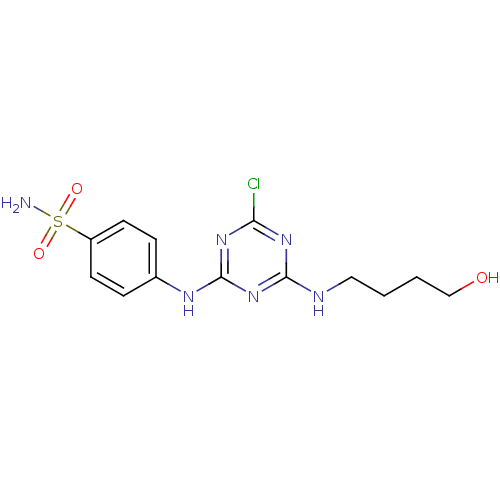BDBM50349851 CHEMBL1813211
SMILES NS(=O)(=O)c1ccc(Nc2nc(Cl)nc(NCCCCO)n2)cc1
InChI Key InChIKey=ICQYVLLDBMIBQH-UHFFFAOYSA-N
Data 5 KI
Activity Spreadsheet -- Enzyme Inhibition Constant Data from BindingDB
 Found 5 hits for monomerid = 50349851
Found 5 hits for monomerid = 50349851
Affinity DataKi: 27.7nMAssay Description:Inhibition of human recombinant carbonic anhydrase 14 preincubated for 15 mins by CO2 hydration methodMore data for this Ligand-Target Pair
Affinity DataKi: 34.8nMAssay Description:Inhibition of human recombinant carbonic anhydrase 9 preincubated for 15 mins by CO2 hydration methodMore data for this Ligand-Target Pair
Affinity DataKi: 43.9nMAssay Description:Inhibition of human recombinant carbonic anhydrase 12 preincubated for 15 mins by CO2 hydration methodMore data for this Ligand-Target Pair
Affinity DataKi: 119nMAssay Description:Inhibition of human recombinant cytosolic carbonic anhydrase 2 preincubated for 15 mins by CO2 hydration methodMore data for this Ligand-Target Pair
Affinity DataKi: 1.25E+3nMAssay Description:Inhibition of human recombinant cytosolic carbonic anhydrase 1 preincubated for 15 mins by CO2 hydration methodMore data for this Ligand-Target Pair
